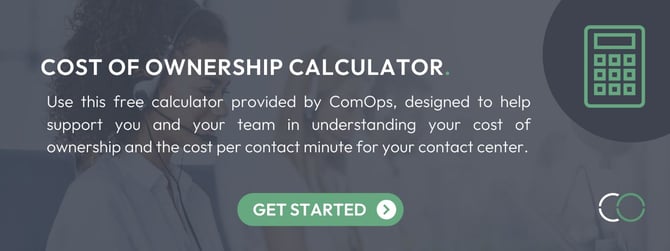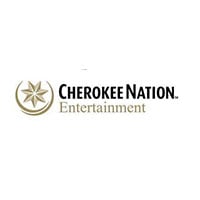
- Our Insights
- Understanding The True Total Cost Of Operating A Contact Center
Introduction
Operating a contact center involves a variety of costs, including labor, infrastructure, facilities, technology, compliance, and miscellaneous expenses. Understanding the true total cost of running a contact center is critical for businesses to make informed decisions about how to manage their operations effectively. In this white paper, we will explore the key factors that contribute to the total cost of operating a contact center, as well as how to calculate those costs accurately.
We will begin by examining the different types of costs associated with running a contact center, including direct and indirect expenses, as well as fixed and variable costs. We will also discuss how to factor in the cost of compliance, which is particularly relevant given the increasingly stringent regulations governing data privacy and security.
Next, we will explore the various methods for calculating the total cost. This includes both traditional methods, such as cost accounting and activity-based costing, as well as newer approaches, such as predictive analytics and machine learning.
We will also discuss the benefits of accurately determining the total cost of operating a contact center, such as identifying opportunities for cost savings, optimizing resource allocation, and improving operational efficiency. By understanding the true total cost, businesses can make informed decisions about whether to manage their contact center operations in-house or outsource to a third-party provider.
Key factors to consider
To determine the true total cost of your contact center operations, you need to take into account several factors. Here are some of the key factors to consider:
- Labor Costs: One of the biggest expenses for contact center operations is labor. This includes salaries, benefits, training, and other related expenses for your contact center staff. Be sure to factor in the cost of recruiting, hiring, and training new employees as well. This last element is particularly important as training is typically non-productive time, meaning that agents are being paid, but are not contributing to revenue generation. When attrition is high, the ratio of non-productive paid time to productive paid time tends to increase, leading to unfavorable cost increases. For this reason, it can be useful to track non-productive paid time separately, particularly in the current difficult staffing landscape.
- Infrastructure & Technology Costs: The infrastructure needed to support your contact center operations can also be a significant expense. This includes hardware and software, such as phone systems, computers, printers, displays, servers, and the core contact center software (ACD/IVR, etc.) as well as tools for workforce management, quality management, and reporting and analytics, and other specialized elements such as credit-card security software, virtual AI assistants, etc. You'll also need to consider ongoing maintenance and upgrade costs for this technology and infrastructure.
- Facilities Costs: Facilities costs include expenses related to your physical location, such as rent, furnishings, utilities, and maintenance. This is particularly relevant if you have an on-premise contact center rather than a virtual or cloud-based one.
- Third-Party Costs: If you are using third-party services to support your contact center operations, be sure to include those costs as well. This might include outsourcing services, cloud hosting, or other technology and/or consulting services.
- Compliance Costs: Managing a contact center requires compliance with various regulations, including data privacy, security, and consumer protection. Beyond the software which supports compliance (as mentioned above), be sure to factor in the cost of maintaining compliance, including audits, certifications, and training.
- Miscellaneous Costs: Finally, there may be other miscellaneous costs to consider, such as insurance, legal fees, and taxes.
To calculate the true total cost of your contact center operations, you'll need to add up all these expenses. Be sure to consider both direct and indirect costs, as well as any opportunity costs associated with managing your contact center in-house versus outsourcing. For instance, where physical space is at a premium, it is sometimes important to consider whether the contact center space could otherwise be dedicated to more profitable activities. Such analysis will help you make an informed decision about whether outsourcing your contact center operations makes financial sense for your organization.
Variables for calculating contact center costs
When listing the key elements to consider when totaling annual ongoing costs for a contact center operation, it’s natural to begin with labor since this is commonly the highest-cost element. When tallying up your labor, it’s important to account for the following:
- Annual Salary and Wages: All hourly jobs supporting the contact center work (this includes part-time and full-time). Where there is a complex blend of part-time and full-time, it can be very useful to utilize FTE (full-time equivalent) as a standard measure, where one FTE is equal to 40 hours of work each week. Using FTE instead of headcount can be very useful in estimating wages, especially when you likely know from payroll records how many paid hours you had each period. For each week, simply take the paid hours for a given position and divide by 40 and you’ll have your FTE number. The process is really the same for salaried and hourly workers, although the paid hours for salaried staff tend to be less volatile. In any case, do not neglect your salaried employees in this exercise – they certainly count in your overall costs.
- Taxes and Benefits: Often, the next big factor in operating cost is the taxes and benefits (T&B) related to your staffing. You won’t likely find this in your payroll data, so you’ll need to go elsewhere. The T&B multiplier is commonly estimated across the entire company, or in some cases, regionally, due to disparate cost structures in different locales, and would commonly be expressed as a percentage of total wages and salaries. Typically, the company Finance department should be able to provide you with the multiplier used for taxes and benefits. Let’s assume they tell you the T&B number is 34.5%. Then, let’s assume that your annual salary and wages comes out to $1,000,000. You’ll want to increase this $1,000,000 by 34.5% in order to get the “loaded” payroll number. So, you’d take $1,000,000 and multiply it by 1.345 (or 134.5%) and end up with loaded annual payroll of $1,345,000.
- Attrition Costs: If your HR team can provide an estimate for the cost to recruit and hire a new employee in your area, it is advisable to include this in your operating costs. Simply multiply that number by the number of new employees you need to add each year and you’ll have a discrete number for the cost of your attrition. There are other models where the cost of unproductive labor (e.g., training, testing, etc.) is also counted in a special way towards attrition costs. But it’s important to remember that, assuming these new employees are on your payroll from day one, then you’ve already accounted for their salary and wages, so you don’t want to risk double-counting them. However, if you have a way to quantify the costs in terms of lack of production, there might be good reason to do that.
- Software Licenses: Operators can easily neglect to include the cost of software licenses utilized by their agents. However, this can be a significant cost that should be included. For instance, if the center utilizes a cloud-based contact center software platform, these are often priced on a per-named-agent-per-month basis. And the number of active licenses should typically appear on the monthly invoice from the software company. Since these costs can often be $150 per agent per month, it’s easy to see that they can add up quite quickly and should be included in overall costs. For example, at that price point, the annual cost for 75 active agents would be $135,000. Additionally, when thinking about software licenses, there are often cases where licenses are paid by the I.T. department and not allocated out to the individual departments. Where this is the case, it’s advisable to try to understand your allocation of license costs and include them in your estimate of annual operating expenses.
- Facility-Related Expenses: In some cases, there may expenses incurred on behalf of your department, but actually absorbed by another. One shining example of this can be rental expense in the event that the company is renting the space where your operation resides. This expense, or an allocation of it, may never appear on your department’s P&L statement, but particularly where the contact center operation takes up all or most of the building, this expense must be considered.
- Other Operating Expenses: Naturally, you’ll want to get a handle on your annual expenditure on things like office supplies, replacement headsets, replacement furniture, various equipment, agent incentives, etc. Without going down the entire list, the general guidance is to look at your operating budget for this year, and the actuals for last year – that will typically help you understand the various other operating expenses.
While there are always more expenses to be unearthed when contemplating the overall cost of your contact center, the items above should help you get a handle on the large items and also inspire you to find more expenses to keep the picture true.
Contact center costs
Finding a metric that can be compared over time, the following two are considered to be the best metrics to review.
- Cost per Contact: When you have your overall annual costs together, a very important benchmark you can use to compare against other operations models (insource vs outsource, as an example) is cost per contact. To arrive at this, you’d simply take your annual operating costs and divide by the number of contacts. So, if the costs were $2,750,000 and your operation handled 700,000 contacts in the year, the cost per contact is $3.93. Also, there’s strong case to be made to break this cost per contact down by the individual contact channel.
For instance, you may have one cost per contact for voice calls, and another (lower) cost for live chats and emails, etc. - Cost per Contact-Minute: Lastly, once you’ve got your cost per contact, you might realize that it’s difficult to compare against other operations because you may have significantly different contact durations (or handle times). Perhaps your operation is doing I.T. support calls where the average call duration is 12 minutes; it would be difficult to compare against an operation doing 4-minute hotel reservation calls. So, to level the playing field, simply take your annual operating costs (as before) and instead of dividing by the number of contacts, divide by the total number of contact-minutes for the year. This will give you the cost per contact-minute which can be used to compare operations regardless of their average handle time. Naturally, you might want to break this down by the different contact channels as well.
In order to help you understand these important per-contact and per-contact-minute costs, please take a look at the simple cost calculator here. While the doesn’t contemplate all operating costs, it is designed to help with the largest and often most complex area – labor.
Benefits of accurately determining the total cost of your contact center operations
Accurately determining the total cost of running a contact center can have a significant impact on a business's bottom line. From identifying areas for cost savings to optimizing resource allocation and improving operational efficiency, understanding the true cost of your contact center operation is critical for businesses that want to maximize profitability and gain a competitive advantage. Here are some of the key advantages in more detail:
- Identify opportunities for cost savings: For example, by reducing agent turnover, implementing self-service options, and optimizing staffing levels, businesses can reduce their expenses and improve their bottom line.
- Optimize resource allocation: By using workforce management and performance management tools, businesses can schedule agents more effectively, reduce idle time, and improve agent performance, which can help save costs.
- Improve operational efficiency: By identifying areas for improvement and implementing best practices, businesses can improve their customer experience, reduce the number of interactions that agents need to handle, and ultimately save costs.
- Increase profitability: By reducing costs and improving operational efficiency, businesses can increase their profitability. This can help businesses invest in growth opportunities, expand their operations, and gain a competitive advantage.
In summary, accurately determining the total cost of running a contact center can help businesses identify opportunities for cost savings, optimize resource allocation, and improve operational efficiency. By leveraging advanced technologies and implementing best practices, businesses can achieve better business outcomes and gain a competitive advantage.
Conclusion
In conclusion, accurately assessing the true total cost of operating a contact center is critical for businesses that want to maximize their profitability and optimize their operations. Through a concerted effort to quantify and truly understand contact center costs, , businesses can gain insights into their contact center operations and identify areas where they can save money, increase revenues, optimize resource allocation, and improve operational efficiency. By implementing best practices and leveraging advanced technologies, businesses can achieve better economic outcomes, improve their customer experience, and gain competitive advantage. Accurately assessing the true total cost of operating a contact center is a key step toward achieving these goals and building a successful and sustainable business.
LET'S GET TO WORK










